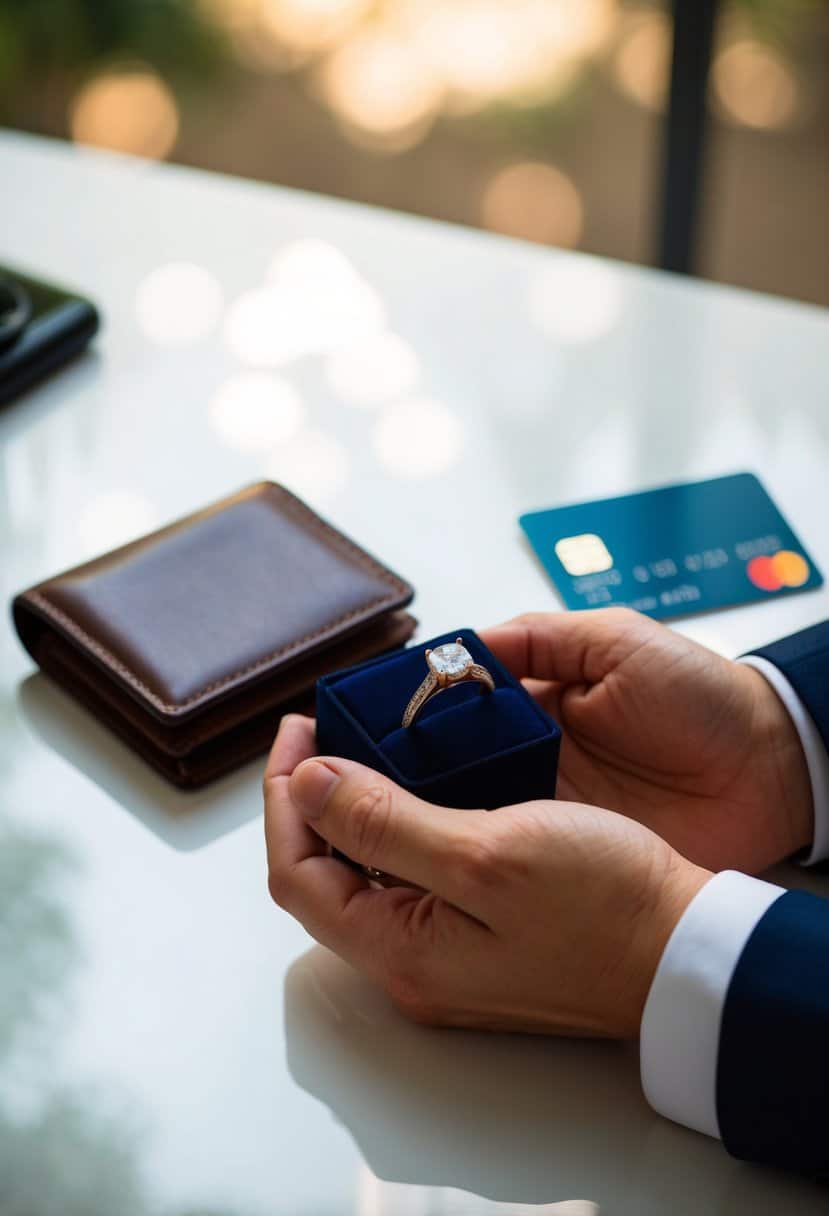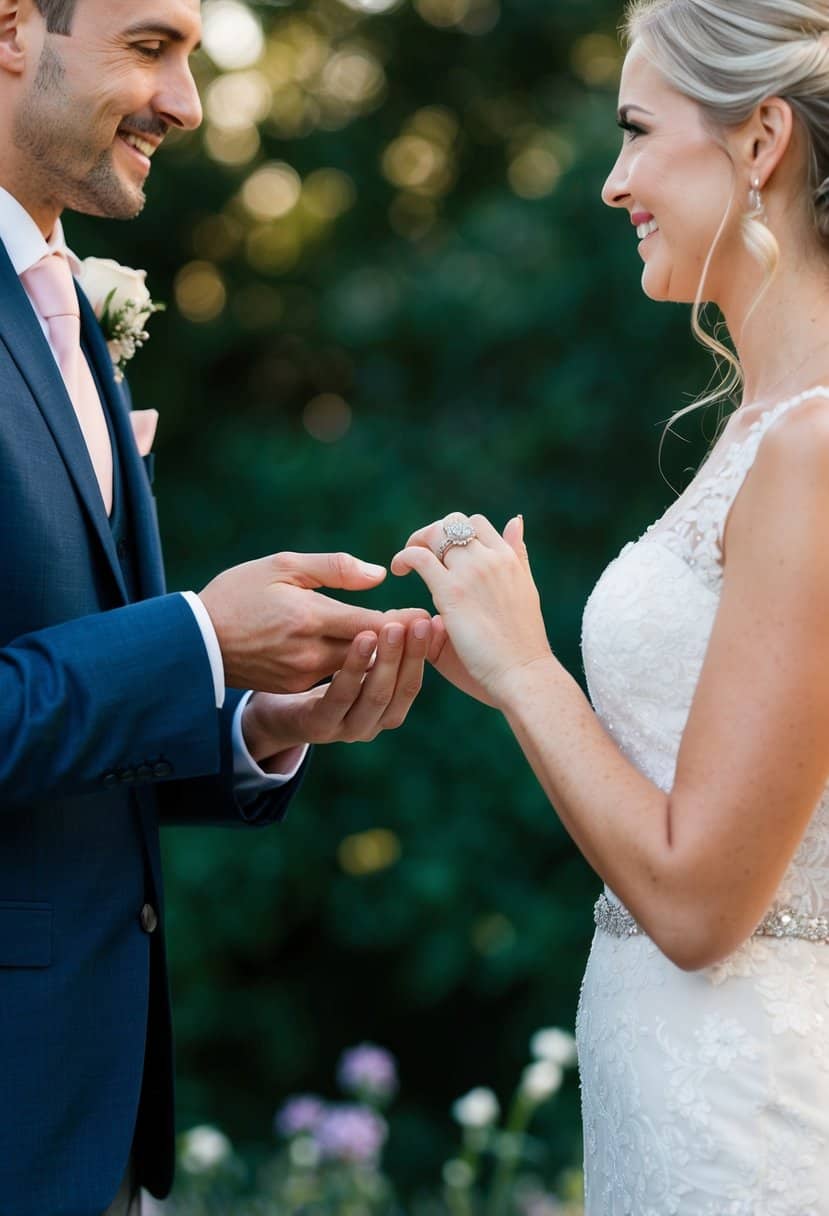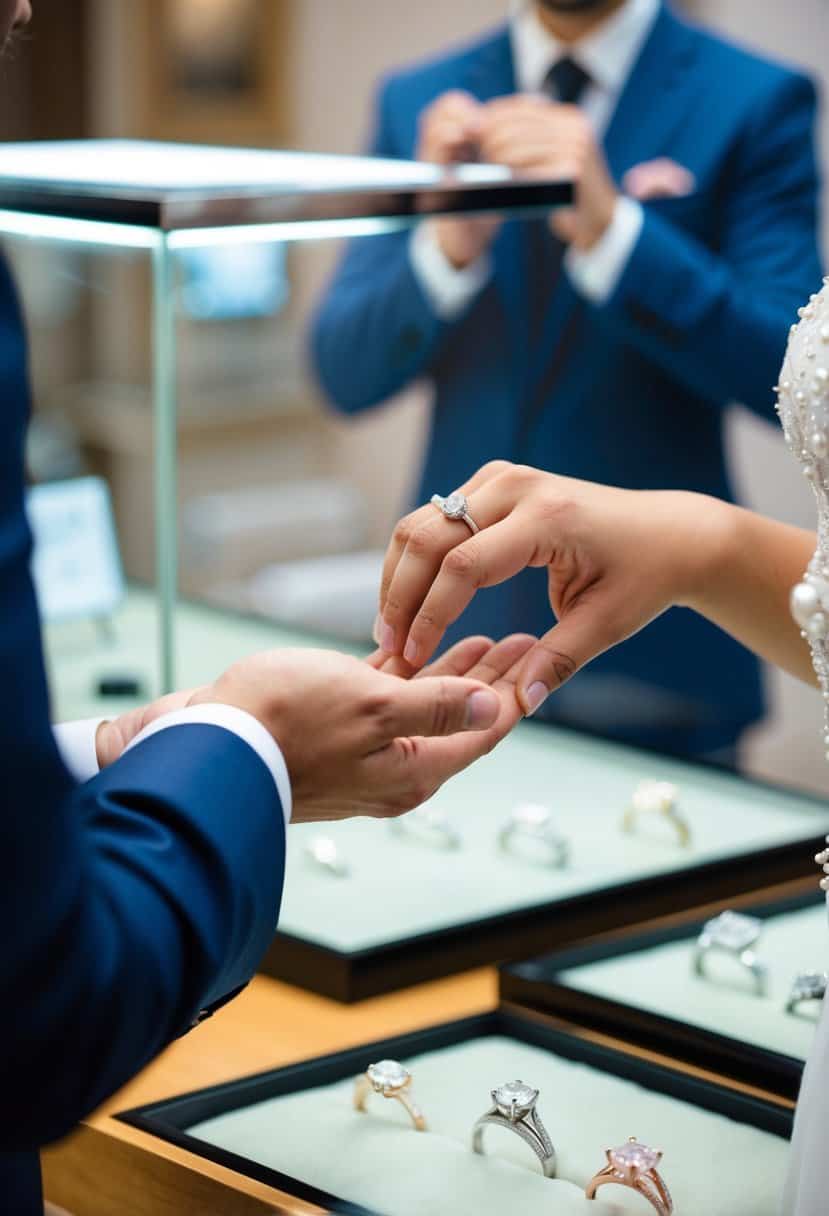Who Pays for the Wedding Ring? A Guide for Couples
Deciding who pays for the wedding ring can be a tricky part of wedding planning. Traditionally, the groom buys both the engagement ring and the couple’s wedding bands. This custom dates back to a time when the groom’s financial capability was part of showing commitment. However, in today’s world, there are no strict rules, and it can vary based on your situation and preferences.

When setting your wedding budget, it’s important to talk openly with your partner about your expectations and financial capabilities. Some modern couples choose to share the costs of the wedding rings or even buy each other’s bands. This choice can make the experience more personal and meaningful.
Your wedding expenses will likely include much more than just the rings. Dividing costs is a common part of the process. For more detailed guidance on cost-splitting, check out websites like The Knot. They offer a comprehensive look at wedding payment etiquette.
Historical Context of Wedding Rings

The tradition of wedding rings has been shaped by various cultures over centuries. From their symbolic origins to their modern evolution, these rings carry deep meaning and reflect changing societal customs.
Origins of the Tradition
Wedding rings have ancient roots, with one of the earliest records tracing back to ancient Egypt. Egyptians saw the circle as a symbol of eternity and started the custom of exchanging rings made from woven reeds or hemp.
This tradition spread to the Greeks and Romans, where the Romans began using iron rings. These iron rings symbolized strength and permanence in marriage. Sometimes, you might have heard of engagement rings being part of the “sponsalia,” a Roman betrothal ceremony.
By the third century AD, materials had shifted to more precious metals like gold and silver, reflecting both a change in status and symbolism. These early traditions have deeply influenced how we view wedding bands today.
Evolution of the Wedding Ring
Over time, wedding rings evolved in design and significance. By the late 1300s or early 1400s, diamond rings appeared in Europe. A famous example is the diamond engagement ring given in 1477.
In the Middle Ages, posy rings engraved with romantic phrases became popular. People believed these inscriptions added a personal touch to the engagement ring and wedding band sets.
The modern custom of wearing wedding rings on the fourth finger of the left hand originates from the belief in a “Vein of Love.” This idea connects directly to the heart, making this finger the logical choice for signifying love and commitment.
Modern Etiquette and Responsibilities

When it comes to wedding rings, the modern approach shifts from traditional norms to more flexible financial arrangements. This involves considering the bride’s family, the groom’s family, and joint financial contributions. Each has specific roles and responsibilities now.
Role of the Bride’s Family
In current wedding traditions, the bride’s family typically doesn’t shoulder the cost of wedding rings. They often focus on other expenses related to the wedding ceremony, such as venue decorations, catering, and invitations. However, in some cases, they might contribute indirectly through gifts or financial support.
Wedding etiquette today embraces more collaboration among families. You’ll see more communication around who wants to contribute and in what capacity. This shift allows for less rigid expectations and more personalized wedding plans, giving everyone a chance to pitch in where they can. It helps to talk openly about your needs and wishes.
Role of the Groom’s Family
Traditionally, the groom’s family would sometimes assist with wedding ring costs. While this is less common now, they might still offer help, especially if families decide on joint financial planning for the wedding.
Their contributions might include help with the rehearsal dinner or transportation, which helps offset other costs that the couple might prioritize elsewhere. It’s now more common for families to divide responsibilities based on preference and financial ability.
Joint Financial Contributions
Many couples prefer to share the cost of wedding rings nowadays. This modern approach involves open discussions about budget and preferences, which helps tailor the experience to what suits you best. Sharing expenses allows both partners to feel equally invested.
In these conversations, consider setting clear financial boundaries or goals. It’s essential to consider your long-term financial plans while setting a budget that reflects your shared values. Cooperation in this way can strengthen your partnership and set a positive precedent for your future financial planning.
Planning and Budgeting for Wedding Rings

When planning for wedding rings, it’s crucial to set a budget that fits your financial situation. Consider starting a fund specifically for the rings and think about what factors are most important when choosing. Striking a balance between what you can afford and what you love can make buying wedding rings a smooth process.
Creating a Ring Fund
Setting up a specific fund for wedding rings can help manage your wedding budget effectively. Begin by deciding how much you’re willing to spend on these symbols of love. You might allocate a set amount from each paycheck to this fund. This way, you can avoid financial strain by the time you’re ready to purchase the rings.
Think about your income, expenses, and any savings goals you have. Using a simple table or spreadsheet can help visualize your progress and ensure you’re on track. If you get extra money, like a bonus or gift, consider adding part of it to your ring fund to speed things up.
Considerations When Selecting Rings
Several factors come into play when choosing wedding rings. First, think about the style. Do you prefer something classic like a plain band, or would you like something with stones or unique details? Each style has its own price range, so your personal taste will guide your decision.
Material is also essential. Rings can be made of gold, silver, platinum, or even alternative metals like titanium. Each type affects the cost differently. Consider what you can afford and what fits your lifestyle — some metals require more maintenance than others.
Balancing Cost and Preferences
Finding the right balance between your budget and your preferences is key to a successful purchase. Decide which features are non-negotiable for you, and where you might compromise. For instance, opting for a simpler design can free up funds for a higher-quality material, or vice versa.
It helps to shop around and compare your options from different jewelers. Discounts and promotions can make a big difference in price. Some couples choose to spend less on wedding rings to invest more in other parts of the wedding, like the venue or honeymoon. Your financial contribution should reflect what matters most to you both.
Factors Influencing the Cost of Wedding Rings

When shopping for wedding rings, several elements can significantly affect how much you end up spending. These factors include the materials used, where you buy them, and any custom features you might want. Understanding these can help you make a more informed decision.
Material and Craftsmanship
The kind of metal you choose for your wedding rings plays a big role in the cost. Common options include gold, platinum, and silver. Gold, for instance, can be found in different types like white, yellow, and rose. Each metal has its own price range and durability.
Craftsmanship also adds to the cost. Handcrafted rings are usually more expensive than machine-made ones. Details like intricate designs or unique finishes can make a significant difference in price. It’s a balance between quality and budget.
Brand and Retailer
Where you buy your wedding rings affects the price too. Well-known brands tend to charge more, but they offer trusted quality. Smaller boutique stores might offer unique designs at a lower cost. However, they may not have the same reputation.
Online retailers can be another option, offering competitive prices. They often have lower overhead costs and pass those savings onto you. Just make sure to check reviews for reliability before purchasing.
Custom Design and Engravings
If you want something special, custom designs can be a great option. Designing your own ring allows you to choose every detail, from the stone to the setting. This personalization comes at a higher cost.
Engravings also add a personal touch. Whether it’s initials, a date, or a special message, engravings make the ring unique. While not as costly as custom designs, they still add to the total price.
Additional Wedding Expenses

Planning a wedding involves various costs beyond just the rings. You’ll encounter expenses for pre-wedding events, post-wedding tasks, and the overall wedding budget. Understanding these can help you manage your finances better and ensure a memorable celebration.
Pre-Wedding Events
Pre-wedding events often include the engagement party, bridal shower, and rehearsal dinner. Each event can add to the overall cost.
For an engagement party, consider venue charges, catering, and decorations. Hosting a bridal shower involves similar costs, plus invitations and favors. The rehearsal dinner, commonly hosted by the groom’s family, includes expenses like venue rental and a dinner menu. Your choice of location, such as a destination wedding, can significantly impact these expenses. Hiring a wedding planner might help you organize these events while staying within budget.
Post-Wedding Considerations
After the wedding, there are still things to budget for. The honeymoon is a major expense, with costs for travel, lodging, and activities. If you have a destination wedding, consider the added expense of transporting belongings or storing certain items.
Thank-you cards and gifts for those who helped or attended are also customary and add to the expenses. Sending out wedding photos and videos to friends and family could include costs, depending on the professional services you choose. Planning for these can help avoid post-wedding financial surprises.
Whole Wedding Budget Overview
Creating a comprehensive budget is essential for managing your wedding expenses. Major costs include the wedding dress, attire, floral arrangements, and venue rental.
Your guest list size can affect costs for the wedding reception and catering. The wedding flowers should fit your theme and can vary in price based on choices.
Invitations, music, and photographer fees also impact the budget. Regularly reviewing your expenses helps ensure you stay on track.
Prioritize what’s most important and consider where you might be willing to cut costs if needed.


